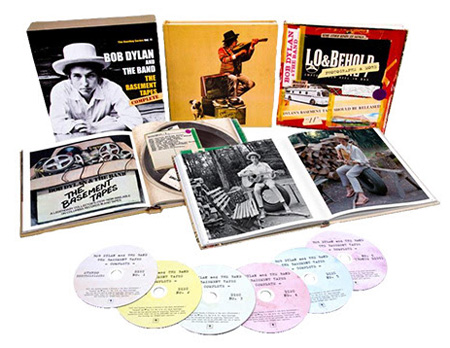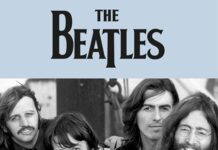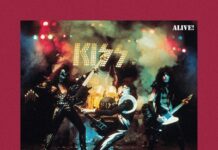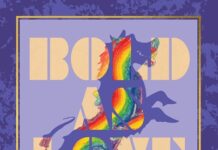Bob Dylan’s ‘Bootleg Series’ have unearthed some of the singer-songwriter’s most epic moments — from phenomenal live collections like Live 1966: The “Royal Albert Hall” Concert and Bob Dylan Live 1975, The Rolling Thunder Revue to multiple-disc sets of demos, alternates and outtakes, covering periods of 1962 to 1964, 1969 to 1971, and 1989 to 2006. Perhaps no time in Dylan’s career has conjured up more curiosity and fascination than immediately after his fabled motorcycle accident that occurred on July 29, 1966. It wasn’t that he sustained any life-threatening injuries; it was more of a life-altering awakening — one that led to major transformations in how Dylan worked and lived. What is mostly known about the months of May to October in 1967 are the informal sessions that Dylan and his backing band the Hawks aka the Band recorded in the basement of a pink house in West Saugerties, New York. Nearly five decades later, The Basement Tapes Complete: The Bootleg Series Vol. 11 brings 139 songs from those days to life.
Before the accident, Dylan had completed a successful four-month tour behind Blonde On Blonde. Obligated with film and book projects (and eventually another album), he settled in with his wife Sara and children, feeling the weight of the world and mulling over his options. Suddenly, with the accident, everything was put on hold. Regular touring wouldn’t resume for another eight years. More importantly, however, was Dylan’s return-to-roots approach to writing and recording that developed as he recovered from his wounds. The mid-60s sneer was replaced by a more revered, studied attitude. The Beatles turned the corner with the release of Sgt. Pepper’s Lonely Hearts Club on June 1, 1967, the Summer of Love followed in its path and a whole wave of psychedelic bands emerged onto the music scene. At the same time, Dylan sat in the basement of Big Pink, away from the spotlight with Robbie Robertson, Garth Hudson, Rick Danko, and Richard Manuel. They took up their instruments and followed the muse, summoning up a mixture of country gospels, blues standards, sea shanties, germs of original songs, others more developed. Hudson took it upon himself to record everything and preserve the moment.
In November 1967, Dylan left upstate New York and went to Nashville to record John Wesley Harding with a whole other set of musicians and songs. Dylan carried on with a countrified style for his next couple albums, wrought somewhat in the spirit of the Big Pink sessions, but seasoned Dylan aficionados were chomping at the bit to hearing the actual Basement Tapes. Some of the more enterprising ones were behind a 1969 bootleg, allegedly one of the first of its kind, called Great White Wonder with contained a selection of songs recorded at the Big Pink. In 1975, to satisfy, Dylan signed off on a double album called The Basement Tapes, comprising 24 songs from the Bog Pink sessions. Some of the tracks were modified by Robertson and Hudson, but for the most part the solo purpose of the release was to close the door on the Basement Tapes.
The six discs of The Basement Tapes Complete: The Bootleg Series Vol. 11 have obviously swung the door back open wide, with what is supposedly everything from Bob Dylan’s Red Room, Big Pink and possibly some other places we’ll never know about. In the first book that houses the six CDs, Robertson says that the ‘basement’ was more of an idea, a concept alluding to the homespun nature of the recordings, than an actual place. By the time you start listening, it really doesn’t make much of a difference.
Indeed, the fidelity is rough, as it should be, but the ideas, the chemistry — the magic is all there. The first couple discs are pretty much filled with impromptu jams, “Belshazzar,” two takes at two different tempos of “Big River” and “Folsom Prison Blues” by Johnny Cash, Hank Williams’ “You Win Again,” and a breezy swoop through poet Charles Badger Clark’s “Spanish Is The Loving Tongue.” Dylan would integrate country music back to his own music on his next few albums, and it pretty much started here.
But then there are the traditional songs, and John Lee Hooker blues, and even Curtis Mayfield’s “People Get Ready.” And somewhere along the way, Dylan starts to come up with own stuff, first with off-the-cuff shenanigans like “See You Later Allen Ginsberg” and then the more developed “Tiny Montgomery,” filled with lines that Dylan likely let flow on his typewriter prior to coming in. It’s really on the third disc when the whole thing sort of surges forth with a batch of original material, starting with “Million Dollar Bash.” Here’s Dylan and the Hawks in all their splendor, a salty sing-along that fits as comfortably and snug as a pair of well-worn slippers.
It goes deeper with “I’m Not There,” with all the trimmings of a Dylan song. Then we get to the real meat of songs that became Dylan classics like “I Shall Be Released” (previously released) and “This Wheel’s On Fire” (on which Rick Danko shares a writing credit). On the fourth disc, there are multiple takes of “Tears of Rage” (written with Richard Manuel), “Quinn The Eskimo” (released in January 1968 as “Mighty Quinn” by Manfred Mann), “Open the Door Homer” and “Nothing Was Delivered.” Two takes of “Odds And Ends” kicks things up electrically, with Robertson taking a lead and Hudson’s organ facilitating the flow, as it does through most of these recordings.
The fifth disc features swaying versions of “Blowin’ In The Wind” and “It Ain’t Me Babe,” and you get the impression that by this time, as the season began to change and the leafs started to turn in the surrounding Catskill Mountains, Dylan and company were feeling a bit restless and feisty. Both this disc and the final discs are filled with reworked oldies, fragments, sketches, ballads and country crooners. Jumping from something like the traditional “900 Miles From My Home” to the jazzy excursions of “All You Have to Do is Dream” to the gospel of “Will The Circle Be Unbroken?” to “Next Time On The Highway,” a bluesy romp that seems to have reinvigorated any misgivings Dylan had about the day he crashed his motorcycle.
The Basement Tapes Complete: The Bootleg Series Vol. 11 is bundled with a second book filled with graphics of tape boxes, album and singles cover art, record labels, news clips, and a slew of Elliott Landy photos). Altogether, this is what many Dylan followers would call the holy grail, the very essence of his transformation from folksy pop star to earnest and elder spokesman of the counter-culture, reaching back to his roots, rearranging his priorities and marking anther chapter in a career that continues to spiral, rivet, roll and make unexpected turns at the very whim of an artist’s capricious nature.
~ Shawn Perry




















